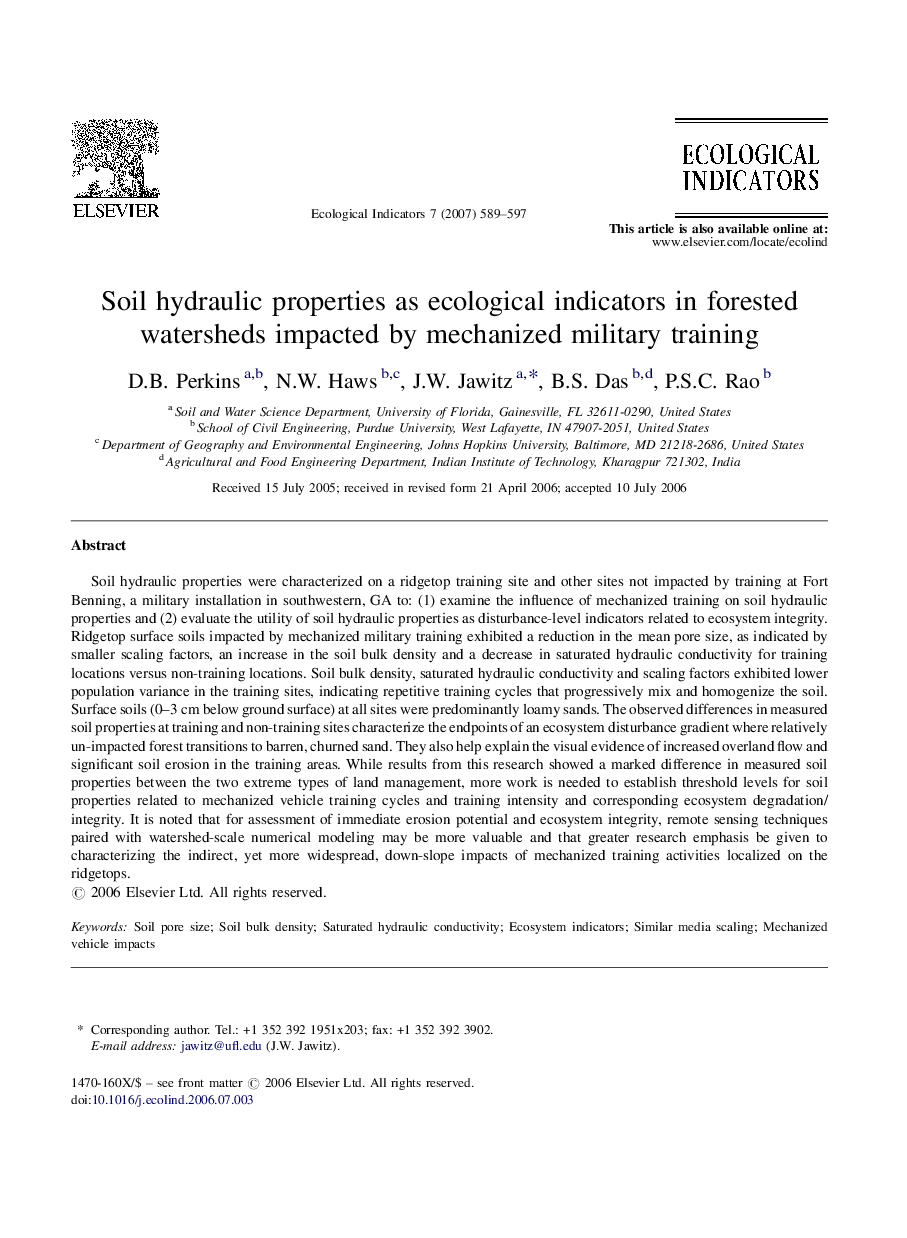| Article ID | Journal | Published Year | Pages | File Type |
|---|---|---|---|---|
| 4374672 | Ecological Indicators | 2007 | 9 Pages |
Soil hydraulic properties were characterized on a ridgetop training site and other sites not impacted by training at Fort Benning, a military installation in southwestern, GA to: (1) examine the influence of mechanized training on soil hydraulic properties and (2) evaluate the utility of soil hydraulic properties as disturbance-level indicators related to ecosystem integrity. Ridgetop surface soils impacted by mechanized military training exhibited a reduction in the mean pore size, as indicated by smaller scaling factors, an increase in the soil bulk density and a decrease in saturated hydraulic conductivity for training locations versus non-training locations. Soil bulk density, saturated hydraulic conductivity and scaling factors exhibited lower population variance in the training sites, indicating repetitive training cycles that progressively mix and homogenize the soil. Surface soils (0–3 cm below ground surface) at all sites were predominantly loamy sands. The observed differences in measured soil properties at training and non-training sites characterize the endpoints of an ecosystem disturbance gradient where relatively un-impacted forest transitions to barren, churned sand. They also help explain the visual evidence of increased overland flow and significant soil erosion in the training areas. While results from this research showed a marked difference in measured soil properties between the two extreme types of land management, more work is needed to establish threshold levels for soil properties related to mechanized vehicle training cycles and training intensity and corresponding ecosystem degradation/integrity. It is noted that for assessment of immediate erosion potential and ecosystem integrity, remote sensing techniques paired with watershed-scale numerical modeling may be more valuable and that greater research emphasis be given to characterizing the indirect, yet more widespread, down-slope impacts of mechanized training activities localized on the ridgetops.
